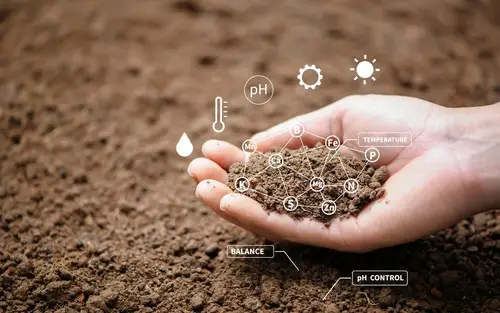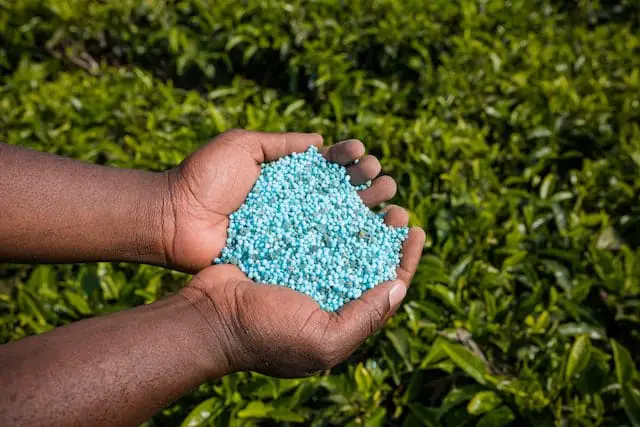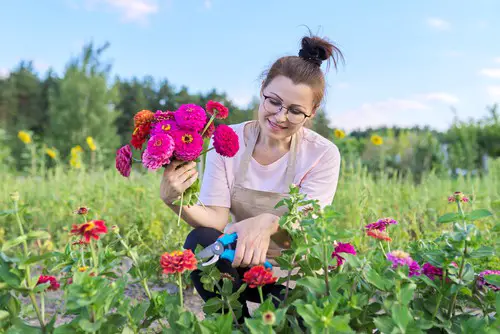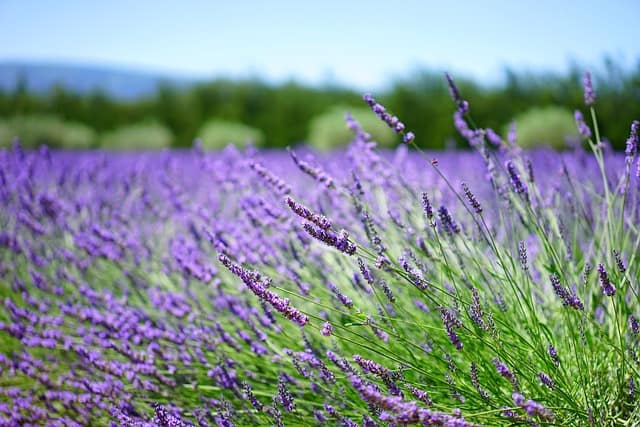Lavender is a popular herb known for its lovely fragrance and beautiful purple flowers. It is a hardy plant that can survive in various weather conditions, making it a favorite among gardeners. However, transplanting lavender can be tricky, and it may cause the plant to droop or wilt.
Lavender plant drooping after transplant is a common problem that many gardeners face. The plant may lose its leaves and flowers, and its stems may become limp and weak. This can be caused by various factors, such as root shock, poor soil quality, improper watering, and lack of sunlight.
Understanding lavender plants and their needs is crucial in ensuring their survival after transplant. Gardeners should take into consideration the plant’s soil and drainage requirements, as well as its fertilizer and watering needs. Proper pruning and maintenance can also help prevent drooping and promote healthy growth.
Key Takeaways
- Transplanting lavender can cause the plant to droop or wilt due to various factors such as root shock, poor soil quality, and improper watering.
- Understanding the plant’s soil and drainage requirements, as well as its fertilizer and watering needs, is crucial in ensuring its survival after transplant.
- Proper pruning and maintenance can help prevent drooping and promote healthy growth in lavender plants.
Other related posts in this category:
Understanding Lavender Plants

Characteristics of Lavender
Lavender plants (Lavandula spp.) are native to the Mediterranean region and are known for their fragrant flowers and aromatic foliage. These plants are members of the mint family and are characterized by their narrow, gray-green leaves and spikes of purple, blue, or pink flowers.
Lavender plants can grow up to 3 feet tall and 3 feet wide, depending on the variety.
Lavender plants are drought-resistant and thrive in full sun and well-drained soil. They are also known for their ability to attract pollinators such as bees and butterflies to the garden.
Ideal Conditions for Lavender
To ensure the health and vitality of lavender plants, it is important to provide them with the ideal growing conditions. Here are some key factors to consider:
- Climate: Lavender plants thrive in a Mediterranean climate, which is characterized by hot, dry summers and mild, wet winters. In areas with colder winters, lavender plants may need to be protected from frost.
- Sunlight: Lavender plants require full sun to thrive. They should be planted in a location that receives at least 6 hours of direct sunlight per day.
- Soil: Lavender plants require well-drained soil that is not too rich in nutrients. Soil that is too heavy or too wet can cause the roots to rot and lead to drooping or wilting plants.
- Watering: Lavender plants are drought-resistant and do not require frequent watering. Overwatering can lead to root rot and other problems. It is best to water lavender plants deeply but infrequently, allowing the soil to dry out between waterings.
By providing lavender plants with the ideal growing conditions, you can help prevent drooping or wilting after transplant.
Transplanting Lavender
Lavender plants are a popular choice for many gardeners due to their beautiful fragrance and attractive appearance. However, transplanting lavender can be tricky, and improper transplanting can cause the plant to droop or even die.
This section will cover the ideal time for transplanting, the transplanting process, and post-transplant care.
1. Ideal Time for Transplanting
The ideal time for transplanting lavender is in the early spring or fall. In the spring, wait until the danger of frost has passed before transplanting. The fall is a good time for transplanting because the cooler temperatures allow the plant to establish its root system before the hot summer months.
2. Transplanting Process
When transplanting lavender, it is important to choose a location with well-draining soil and full sun. If transplanting from a pot, gently remove the plant and loosen the root system before planting it in the ground. Dig a hole that is slightly larger than the root ball and backfill with soil mixed with compost.
3. Post-Transplant Care
After transplanting lavender, it is important to water the plant deeply and regularly for the first few weeks until it becomes established. Be careful not to overwater, as lavender prefers well-draining soil.
Mulching around the base of the plant can help retain moisture and suppress weeds. Prune back any dead or damaged growth to encourage healthy new growth.
Lavender Plant Drooping After Transplant – 3 Common Problems

Lavender plants are commonly transplanted from one location to another. However, after transplanting, the plants may exhibit signs of stress, including drooping or wilting. This section will discuss the common problems that may arise after transplanting lavender plants.
1. Transplant Shock
Transplant shock is a common problem that occurs after transplanting a lavender plant. This is because the plant may have undergone a significant change in its environment, which can cause stress. The plant may also have suffered damage to its roots, leaves, or stems during the transplanting process.
To minimize transplant shock, it is recommended to water the plant thoroughly before transplanting it. This can help reduce stress and prevent the plant from wilting or drooping. Additionally, it is important to handle the plant gently during the transplanting process to minimize damage.
2. Over-Watering and Under-Watering
Over-watering or under-watering can also cause lavender plants to droop or wilt after transplanting. Lavender plants prefer a dry environment with little water, and because of their Mediterranean heritage, they can tolerate drought. Therefore, it is important to avoid over-watering the plant to prevent root rot and fungal infections.
On the other hand, under-watering can also cause the plant to wilt or droop. This is because the plant may not be receiving enough water to sustain its growth. Therefore, it is important to ensure that the plant is receiving enough water to maintain its soil moisture levels.
3. Root Rot and Fungal Diseases
Root rot and fungal diseases are other common problems that may occur after transplanting a lavender plant. These problems can occur due to poor drainage, over-watering, or fungal infections.
Root rot occurs when the roots of the plant are damaged due to waterlogged soil, while fungal infections can occur due to poor soil conditions.
To prevent root rot and fungal infections, it is important to ensure that the plant is planted in well-draining soil. Additionally, it is important to avoid over-watering the plant and to maintain proper soil moisture levels.
If the plant is infected with a fungal disease, it is recommended to remove the infected parts of the plant and treat the remaining plant with a fungicide.
Soil and Drainage Considerations

When transplanting lavender, it is important to consider the soil and drainage conditions to ensure that the plant thrives in its new environment. Lavender plants require well-draining soil to prevent waterlogging, which can lead to root rot and ultimately cause the plant to droop and wilt.
In this section, we will discuss the importance of good drainage, ideal soil type for lavender, and how to improve soil drainage.
1. Importance of Good Drainage
Good drainage is crucial for lavender plants, as they are susceptible to root rot caused by waterlogged soil. When planting lavender in the ground, it is important to ensure that the soil is well-draining and does not retain water.
This can be achieved by incorporating sand, gravel, or perlite into the soil to increase its porosity and improve drainage.
2. Ideal Soil Type for Lavender
Lavender plants thrive in sandy soil with good drainage. Sandy soil allows water to drain quickly, preventing waterlogging and root rot. The ideal soil pH for lavender is between 6.5 and 7.5, which is slightly acidic to neutral. If the soil is too acidic or alkaline, it can affect the plant’s ability to absorb nutrients and cause it to droop and wilt.
3. Improving Soil Drainage
If the soil in the planting area is not well-draining, there are several ways to improve its drainage. One way is to incorporate sand, gravel, or perlite into the soil to increase its porosity.
Another way is to create raised beds, which allow for better drainage and prevent waterlogging. Additionally, compacted soils can be loosened by tilling or aerating the soil to improve drainage.
When watering lavender plants, it is important to avoid overwatering, as this can lead to waterlogging and root rot. Lavender plants prefer to dry out between watering, so it is important to monitor the soil moisture and water only when necessary.
Fertilizer and Watering Needs

1. Fertilizer Requirements
Lavender plants do not require a lot of fertilizer. In fact, too much fertilizer can harm the plant and cause it to wilt or droop. When transplanting lavender, it is recommended to use a slow-release fertilizer that is low in nitrogen. Nitrogen promotes leafy growth, which can make the plant more susceptible to wilting and drooping.
If the soil is already fertile, there may be no need to add fertilizer. Lavender plants prefer soil that is not too rich in nutrients. Over-fertilizing can lead to an excess of salts in the soil, which can cause root damage and lead to wilting.
2. Watering Guidelines
Proper watering is crucial for the health of lavender plants. Overwatering can cause the roots to rot, while underwatering can lead to wilting and drooping. When transplanting lavender, it is important to water the plant thoroughly and then allow the soil to dry out slightly before watering again.
The frequency of watering will depend on the climate and soil moisture. In hot and dry climates, lavender plants may require more frequent watering. However, in areas with high rainfall, infrequent watering may be sufficient.
It is also important to avoid watering the leaves of the plant, as this can promote the growth of fungal diseases. Instead, water the plant at the base, taking care not to overwater.
3. Moisture and Soil Conditions
Lavender plants prefer well-draining soil that is not too moist. When transplanting, it is important to ensure that the soil is not too compacted, as this can prevent water from draining properly. Adding organic matter, such as compost, to the soil can help improve drainage and moisture retention.
It is important to monitor the soil moisture level regularly to ensure that the plant is not being overwatered or underwatered. A moisture meter can be useful for this purpose.
Pruning and Maintenance

Pruning Lavender
Pruning is an important part of maintaining a healthy and attractive lavender plant. It helps to promote new growth and prevent the plant from becoming too woody. Pruning should be done once a year in the late summer or early fall, after the plant has finished blooming.
To prune, remove about one-third of the plant’s height, cutting just above a leaf node. This will encourage new growth and help to keep the plant looking neat and tidy. It’s also important to remove any dead or damaged branches, as these can attract pests and disease.
Seasonal Maintenance
Lavender is a low-maintenance plant, but it still requires some care to thrive. During the growing season (spring and summer), make sure to water the plant deeply once a week if there has been no significant rainfall, as lavender prefers well-drained soil.
In the winter, it’s important to protect the plant from harsh weather conditions. Cover the plant with a layer of mulch or straw to help insulate the roots and protect them from freezing temperatures.
Additionally, it’s a good idea to fertilize the plant once a year in the spring, using a balanced fertilizer that is low in nitrogen. This will help to promote healthy growth without encouraging excessive foliage.
Frequently Asked Questions
How long does transplant shock last for lavender?
Transplant shock can last for a few days to a few weeks. Lavender plants may show signs of stress immediately after transplanting, but they usually recover within a few weeks.
Why is my lavender drooping after repotting?
Lavender may droop after repotting due to overwatering, underwatering, or transplant shock. It could also be a sign of root rot or other diseases. It is important to make sure the plant is not getting too much or too little water and to check for any signs of disease.
Will droopy lavender recover?
Droopy lavender can recover if the cause of the drooping is identified and addressed. If the plant is suffering from transplant shock, it will usually recover within a few weeks. If the drooping is due to overwatering or underwatering, adjusting the watering schedule can help the plant recover.
How do you fix wilting lavender?
To fix wilting lavender, it is important to identify the cause of the wilting. If the plant is suffering from overwatering, reducing the amount of water it receives can help.
If it is underwatered, increasing the amount of water it receives can help. If the plant is suffering from transplant shock, it is important to give it time to recover.
What causes lavender to wilt and turn brown?
Lavender can wilt and turn brown due to a variety of reasons, including overwatering, underwatering, root rot, disease, or pests. It is important to identify the cause of the wilting and address it accordingly.
Can indoor lavender plants droop after transplant?
Yes, indoor lavender plants can droop after transplant. They may experience transplant shock or suffer from overwatering or underwatering. It is important to monitor the plant’s water needs and give it time to adjust to its new environment.

Hey, I’m Lisa and I’ve been an avid gardener for over 30 years. I love writing, talking and living in the garden! Feel free to connect with me on my socials below

